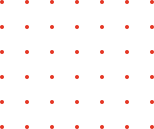
Characteristics and Applications of 3D Curved Fencing
3D curved fencing is a modern architectural element known for its aesthetic appeal and functional versatility. Unlike traditional flat fencing, 3D curved fencing features a three-dimensional design with smooth, flowing curves that add a dynamic visual element to any space. This type of fencing is typically constructed from durable materials such as steel, aluminum, or composite materials, ensuring both strength and longevity. Its unique design not only enhances privacy and security but also serves as a decorative feature, blending seamlessly with various architectural styles.
One of the key advantages of 3D curved fencing is its adaptability to different terrains. The curved design allows it to follow the natural contours of the landscape, making it ideal for uneven or sloped areas where traditional fencing might be challenging to install. Additionally, the open yet secure structure provides ventilation and visibility while maintaining a barrier against intruders.
3D curved fencing is widely used in residential, commercial, and public spaces. In residential settings, it is often employed to create elegant garden enclosures or pool surrounds. In commercial areas, it is used for perimeter security while maintaining an inviting appearance. Public parks and recreational areas also benefit from its aesthetic and functional qualities, providing safety without compromising on design. Overall, 3D curved fencing is a versatile solution that combines form and function, making it a popular choice for modern landscapes.